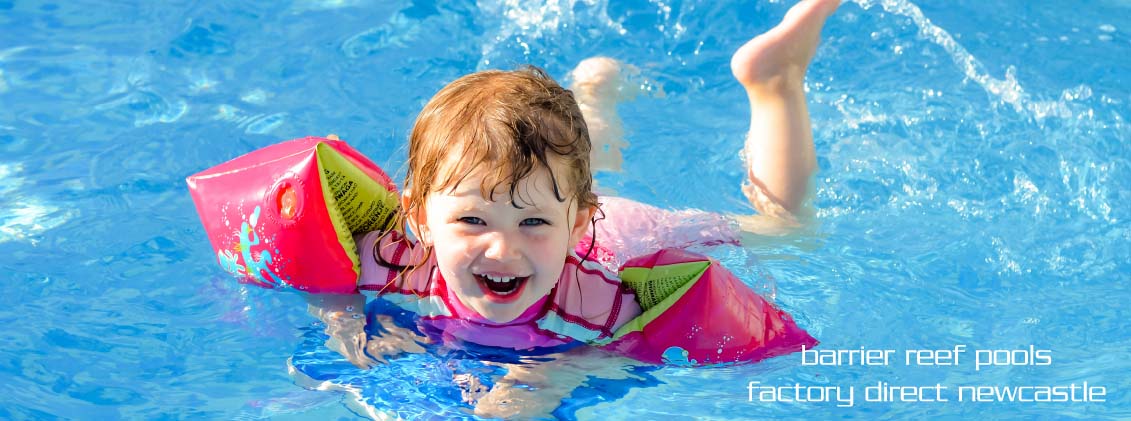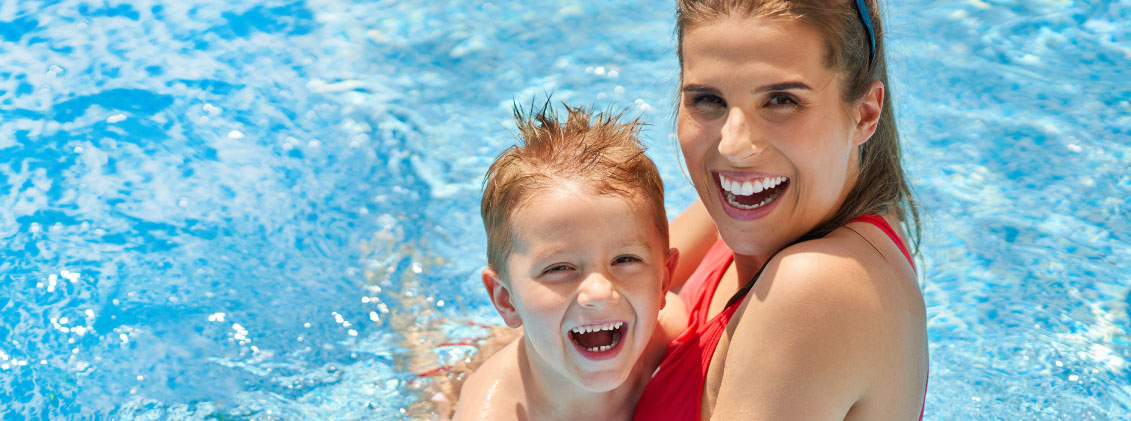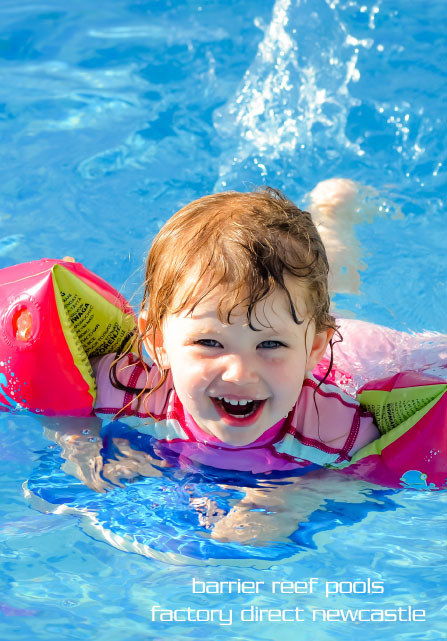An In-depth Look At Above Ground Pools - Is This The Right Option For You?
Whether you want your family to spend more time together, make your kids more active, or find a way to unwind and relax, a swimming pool can do the job for you. However, with so many options and the cost of installing a swimming pool, this whole process can become overwhelming. Each type of installation them has its own sets of advantages and disadvantages. For example, an above-ground pool can be installed and maintained easily. It is less expensive than other types of pools, which makes it a relaxing and affordable luxury you can have at your home. Thanks to its easy installation process, having an above-ground pool is the best option for someone who is on a tight budget. Installing one will take less effort than installing an in-ground pool. A skilled pool builder can have it installed within a few hours. Read on to learn if an above-ground pool is the right option for you or not.

Things To Consider Before Installing An Above-Ground Pool
Having a swim in your very own swimming pool can be relaxing and help you take the stress off. Whether you have a small or large budget or a small or large background, you can enjoy everything that an above-ground swimming pool has to offer. When compared to in-ground pools, above-ground pools offer several advantages.
The most significant one is the cost. These pools are typically more affordable than in-ground pools. Installing an above-ground pool of good quality, including the filtration system and pump, is a lot less than the starting point for a typical in-ground pool.
Another benefit offered by the above-ground pool is the installation time. If you are getting an in-ground pool, it will take you anywhere between two to three weeks to get it installed. This time can extend even more depending on what type of in-ground pool you are getting. However, if you choose an above-ground pool, you can have it installed it in a couple of days or even hours.
Above-ground pools are available in a wide range of shapes and sizes. But, the most basic shapes are round, oval, and rectangular. The oval pools won’t be truly oval, but rectangles that have rounded ends. Typically, the round pools are 10 to 33 feet in diametre and ovals and rectangles range from 12 x 24 to 18 x 44 feet. The usual depth of an above ground pool is between 48 to 52 inches. It requires a level surface along with access to water and electricity. If you have a small yard, you have to be careful about the installation. For example, in the case of rectangular and oval pools, you will need about three feet of clearance space for accommodating the space.
In most communities, you will need a building permit for pools that are over 500 sq. ft. in area, deeper than 24 inches, or have a circulating system. You will have to consult your local building regarding zoning laws and code requirements.
Also, there are some pools that can’t be placed over buried power lines, overhead power lines, or septic systems. You might have to surround your pool with a 48-inch-high fence. In the case of an above-ground model, your pool walls can serve as a barrier.

Installing An Above-Ground Pool
It is possible to install the above-ground pool by yourself, but it is recommended that you hire a professional to do this. Here is what goes into an above-ground pool installation:
1. Clean The Designated Area
After you have selected a spot for your pool, the area will need to be cleared. Apart from removing the soil present under the eventual resting place of your pool, any materials nearby that might damage it will also need to be removed. Make sure that you look up the requirements in your area for barrier codes.
2. Level The Site
Once the soil has been removed, your experienced pool builder will start working on levelling the area, making sure that the higher sides of the designated area are equal with the soils lowest grade. Most professionals deal with this using a skid steer or a bobcat. You have to remember that because of the weight of your swimming pool, the ground will be pushed down and outwards. Your ground must be able to support the weight of the pool. You should never choose an area of fill dirt for building a pool.
3. Consider Drainage
You also have to consider additional drainage from the site. Having a professional will come in handy for this. They will be able to tell if your pool could turn your yard into a swamp or dry it up.
4. Frame The Foundation
To ensure that the sides of your above-ground pool have extra support, your pool builder will have to use full-sized stones or patio blocks. These blocks must be levelled so that the pool frame is able to rest on them firmly.
5. Install The Base Support Material
Installing the base under the pool will ensure that there is a barrier between the harsh terrain and the membrane of your pool. If you have a good base material for your pool, it will help cushion against stone and rock debris. Having a supportive pool base will ensure that your pool is protected from the elements.

6. Install The Pool
Your pool will generally be lifted in by a crane and placed into position. Your pool will be secured to ensure it doesn’t shift out of place overtime.
7. Assemble The Frame
Many choose to install a frame around above ground pools. Your pool builder will ensure that all the pieces fit in a uniform shape. They will tighten all the screws and bolts and make sure that cover caps are checked.
8. Take Out The Excess Material From The Ground
Once the ground has been prepared for the pool, any remaining soil or materials will be removed from site.
9. Abide By The Electrical System Requirements And Codes
You have to get a permit for your above-ground pool, which you might have to display during or after the construction. Make sure that your setup and wires are in accordance with the local codes.
To Conclude
Having an above-ground swimming pool can be an easy and affordable way for you to have the perfect hanging spot for your family. Hire a professional to do the job, and you will have your swimming pool in no time.
An In-depth Look At Above Ground Pools - Is This The Right Option For You?
Whether you want your family to spend more time together, make your kids more active, or find a way to unwind and relax, a swimming pool can do the job for you. However, with so many options and the cost of installing a swimming pool, this whole process can become overwhelming. Each type of installation them has its own sets of advantages and disadvantages. For example, an above-ground pool can be installed and maintained easily. It is less expensive than other types of pools, which makes it a relaxing and affordable luxury you can have at your home. Thanks to its easy installation process, having an above-ground pool is the best option for someone who is on a tight budget. Installing one will take less effort than installing an in-ground pool. A skilled pool builder can have it installed within a few hours. Read on to learn if an above-ground pool is the right option for you or not.

Things To Consider Before Installing An Above-Ground Pool
Having a swim in your very own swimming pool can be relaxing and help you take the stress off. Whether you have a small or large budget or a small or large background, you can enjoy everything that an above-ground swimming pool has to offer. When compared to in-ground pools, above-ground pools offer several advantages.
The most significant one is the cost. These pools are typically more affordable than in-ground pools. Installing an above-ground pool of good quality, including the filtration system and pump, is a lot less than the starting point for a typical in-ground pool.
Another benefit offered by the above-ground pool is the installation time. If you are getting an in-ground pool, it will take you anywhere between two to three weeks to get it installed. This time can extend even more depending on what type of in-ground pool you are getting. However, if you choose an above-ground pool, you can have it installed it in a couple of days or even hours.
Above-ground pools are available in a wide range of shapes and sizes. But, the most basic shapes are round, oval, and rectangular. The oval pools won’t be truly oval, but rectangles that have rounded ends. Typically, the round pools are 10 to 33 feet in diametre and ovals and rectangles range from 12 x 24 to 18 x 44 feet. The usual depth of an above ground pool is between 48 to 52 inches. It requires a level surface along with access to water and electricity. If you have a small yard, you have to be careful about the installation. For example, in the case of rectangular and oval pools, you will need about three feet of clearance space for accommodating the space.
In most communities, you will need a building permit for pools that are over 500 sq. ft. in area, deeper than 24 inches, or have a circulating system. You will have to consult your local building regarding zoning laws and code requirements.
Also, there are some pools that can’t be placed over buried power lines, overhead power lines, or septic systems. You might have to surround your pool with a 48-inch-high fence. In the case of an above-ground model, your pool walls can serve as a barrier.

Installing An Above-Ground Pool
It is possible to install the above-ground pool by yourself, but it is recommended that you hire a professional to do this. Here is what goes into an above-ground pool installation:
1. Clean The Designated Area
After you have selected a spot for your pool, the area will need to be cleared. Apart from removing the soil present under the eventual resting place of your pool, any materials nearby that might damage it will also need to be removed. Make sure that you look up the requirements in your area for barrier codes.
2. Level The Site
Once the soil has been removed, your experienced pool builder will start working on levelling the area, making sure that the higher sides of the designated area are equal with the soils lowest grade. Most professionals deal with this using a skid steer or a bobcat. You have to remember that because of the weight of your swimming pool, the ground will be pushed down and outwards. Your ground must be able to support the weight of the pool. You should never choose an area of fill dirt for building a pool.
3. Consider Drainage
You also have to consider additional drainage from the site. Having a professional will come in handy for this. They will be able to tell if your pool could turn your yard into a swamp or dry it up.
4. Frame The Foundation
To ensure that the sides of your above-ground pool have extra support, your pool builder will have to use full-sized stones or patio blocks. These blocks must be levelled so that the pool frame is able to rest on them firmly.
5. Install The Base Support Material
Installing the base under the pool will ensure that there is a barrier between the harsh terrain and the membrane of your pool. If you have a good base material for your pool, it will help cushion against stone and rock debris. Having a supportive pool base will ensure that your pool is protected from the elements.

6. Install The Pool
Your pool will generally be lifted in by a crane and placed into position. Your pool will be secured to ensure it doesn’t shift out of place overtime.
7. Assemble The Frame
Many choose to install a frame around above ground pools. Your pool builder will ensure that all the pieces fit in a uniform shape. They will tighten all the screws and bolts and make sure that cover caps are checked.
8. Take Out The Excess Material From The Ground
Once the ground has been prepared for the pool, any remaining soil or materials will be removed from site.
9. Abide By The Electrical System Requirements And Codes
You have to get a permit for your above-ground pool, which you might have to display during or after the construction. Make sure that your setup and wires are in accordance with the local codes.
To Conclude
Having an above-ground swimming pool can be an easy and affordable way for you to have the perfect hanging spot for your family. Hire a professional to do the job, and you will have your swimming pool in no time.


